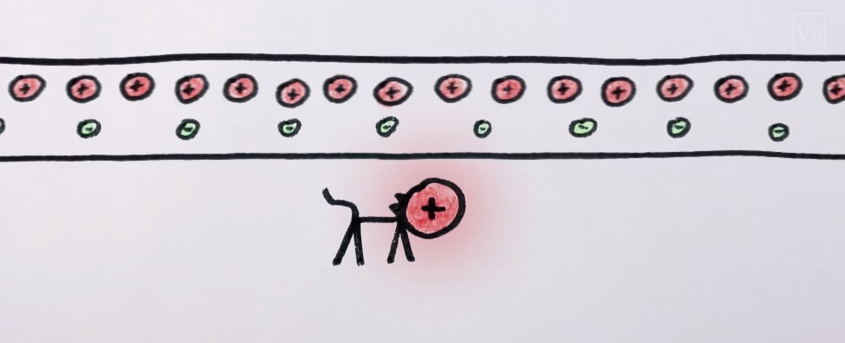This Veritasium video explains how electromagnets can be explained by special relativity, and how the magnetic field surrounding a current-carrying wire can also be viewed as an electric field, if your frame of reference is moving with respect to the wire.
The example they use is a positively-charged cat, moving along a current-carrying wire in the same direction as the electron drift:

If you view this from the rest frame of the cat, then the electron's drift velocity is zero, while the protons are moving to the left. Because the protons are moving, length contraction makes it look like (to the cat) there are more of them, giving the wire a net positive charge, repelling the cat.
This makes sense and is all kinds of elegant and intuitive. It explains electromagnets in a way that depends on only three simple concepts:
- motion is relative
- things contract in their direction of apparent motion
- opposite charges attract, like charges repel
Groovy. Now back up in the video. Derek says:
Now the number of protons is equal to the number of negative electrons, so overall the wire is neutral. So if there were a positively-charged cat nearby, it would experience no force from the wire at all. And even if there were a current in the wire, the electrons would just be drifting in one direction, but the density of positive and negative charges would still be the same, and so the wire would be neutral, so no force on the kitty.

Wait...what? Why is it that in the cat's frame, the protons are moving, are contracted, and the wire is charged, but in Derek's frame, the electrons are moving, but are not contracted, and the wire is still neutral?
How can you say "well, length contraction creates charge imbalances, allowing magnetic forces to be explained as electrical ones if you choose the right reference frame", but simultaneously say "but length contraction doesn't happen sometimes"? That's not elegant at all. Is there an elegant, intuitive1 explanation?
1: meaning, I've seen the math on Wikipedia and it's over my head. There is also current in wire + special relativity = magnetism where the answer to my question seems to be "the Lorentz force". OK, but that negates the elegance of the explanation above, with only three simple axioms. Are they not sufficient? If so, why?
